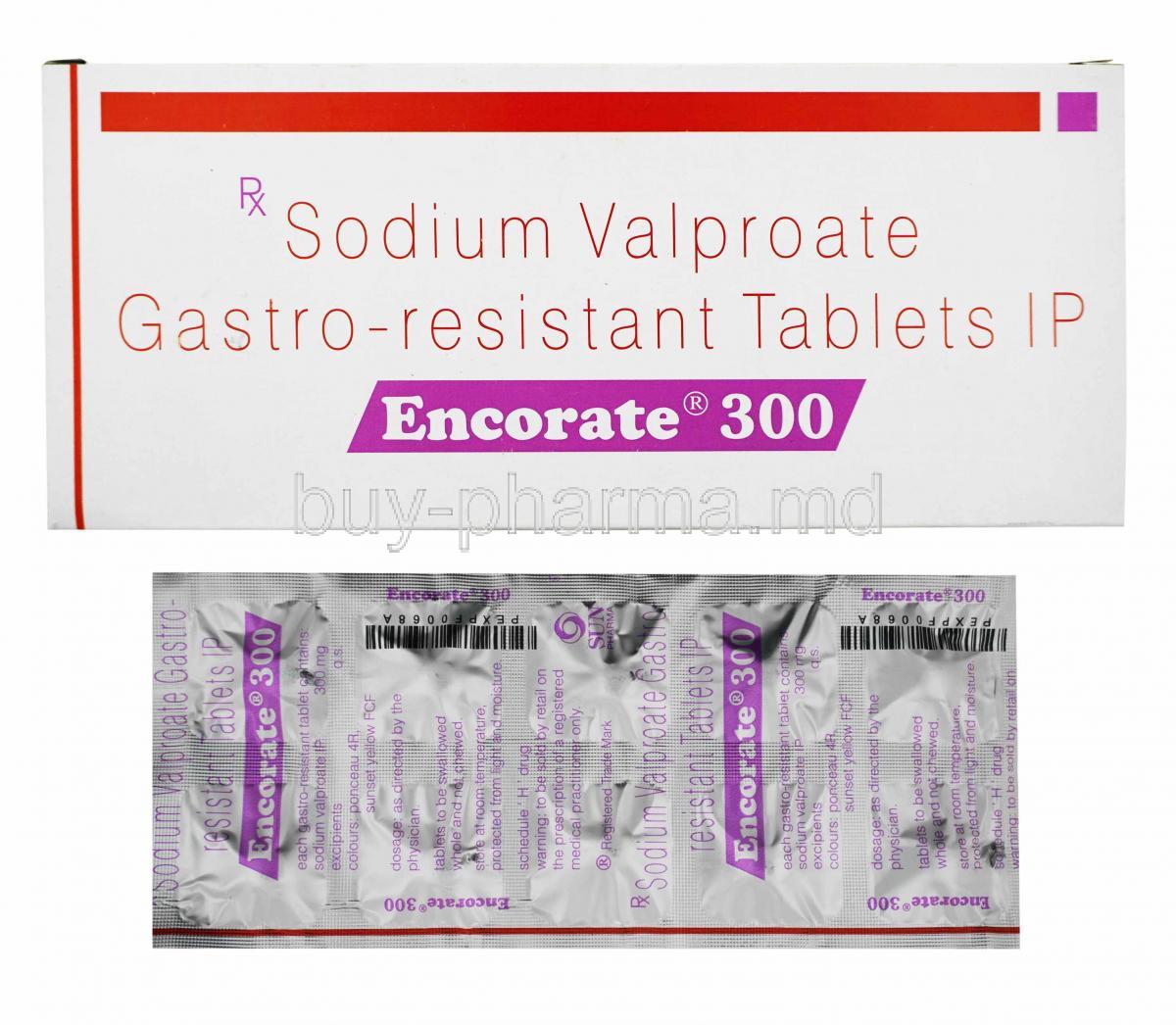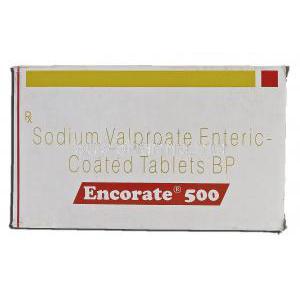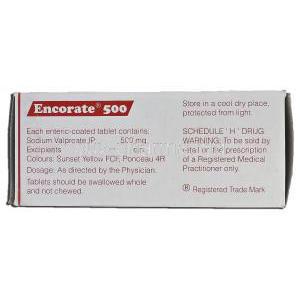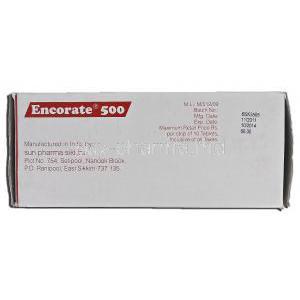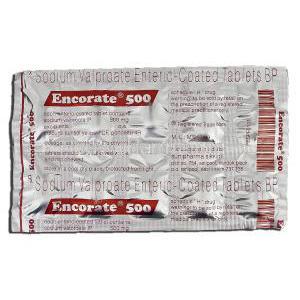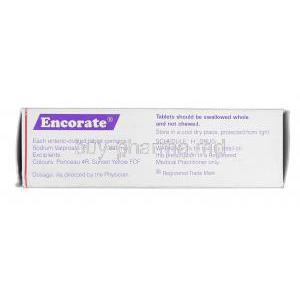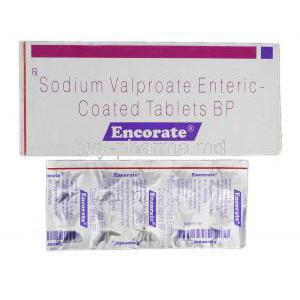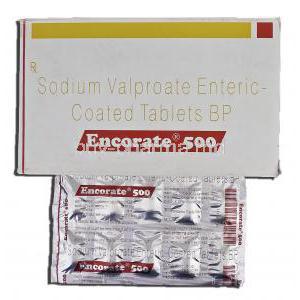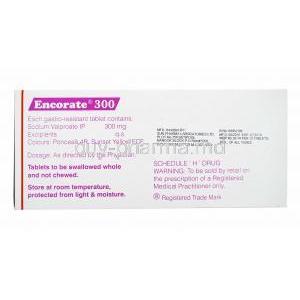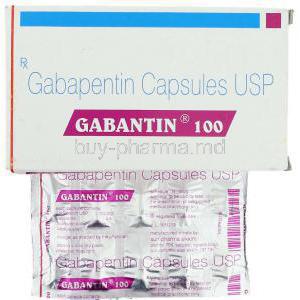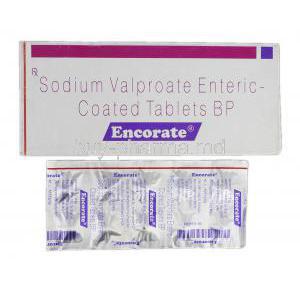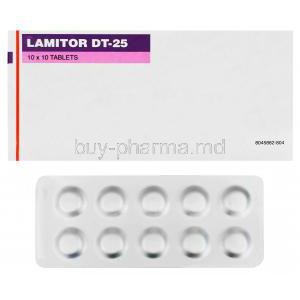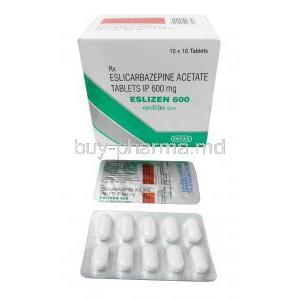Introduction to Encorate (Sodium Valproate)
Sodium Valproate, marketed under the brand name Encorate among others, is a widely used antiepileptic medication known for its broad-spectrum activity. It effectively manages various types of seizure disorders, mood stabilization in bipolar disorder, and prevention of migraine attacks. Developed in the mid-20th century, it has become a cornerstone in neurological and psychiatric therapy worldwide. Encorate is available across multiple countries under different brand names, making it accessible to a wide patient population. Classified pharmacologically as an anticonvulsant and mood stabilizer, it exerts profound effects on neuronal excitability and neurotransmission.
Composition and Formulations
The primary active ingredient in Encorate is Sodium Valproate. It is manufactured in several dosage forms to suit diverse clinical needs:
- Tablets – available in multiple strengths for flexible dosing
- Oral syrup – designed for pediatric and elderly patients or those with swallowing difficulties
- Injectable formulations – for acute management where oral administration is not possible
Strength variations are standardized, and excipients are included to ensure stability, bioavailability, and patient tolerability. Encorate meets stringent pharmacopoeial standards for potency, purity, and uniformity of dosage.
Mechanism of Action – How Encorate Works
Encorate exerts its therapeutic effect through multiple neurophysiological pathways:
- Enhancement of gamma-aminobutyric acid (GABA) activity, increasing inhibitory neurotransmission in the brain
- Modulation of voltage-gated sodium and calcium channels, stabilizing neuronal membranes
- Neuroprotective properties, reducing oxidative stress and excitotoxicity
- Regulation of neuronal excitability, thereby decreasing abnormal electrical discharges
Medical Uses of Encorate
4.1 Approved Uses
- Generalized epilepsy: including absence, tonic-clonic, and myoclonic seizures
- Partial seizures and complex partial seizures
- Bipolar disorder: for acute manic episodes and maintenance therapy
- Prophylaxis of migraine headaches
4.2 Off-Label and Emerging Uses
- Management of neuropathic pain syndromes
- Adjunctive therapy in schizoaffective disorder and mood instability
- Reduction of aggression in dementia and certain neurodevelopmental disorders
- Supportive treatment in select psychiatric conditions resistant to conventional therapies
Dosage and Administration Guidelines
5.1 General Dosing Principles
Treatment typically begins with a low dose, titrated gradually to achieve therapeutic effect while minimizing side effects. Dosage is often weight-based, and periodic monitoring of serum valproate levels is recommended to ensure efficacy and safety.
5.2 Adult Dosage
- Epilepsy: Initiated at a modest dose, with gradual increments to the optimal maintenance level
- Bipolar disorder: Loading doses may be used for acute mania, followed by maintenance dosing
- Migraine prevention: Lower doses than epilepsy regimens, adjusted according to response
5.3 Pediatric Dosage
Dosing in children is adjusted for body weight, with syrup formulations providing precise measurement. Safety considerations are paramount, especially in very young patients.
5.4 Special Administration Considerations
- Careful cross-titration when switching from other antiepileptic agents
- Selection between extended-release and immediate-release formulations based on patient needs
- Administration with or after food to reduce gastrointestinal discomfort
Side Effects of Encorate
6.1 Common Side Effects
- Nausea, vomiting, and mild gastrointestinal upset
- Tremors, dizziness, and general fatigue
- Increased appetite and weight gain
- Hair loss and menstrual irregularities in women
6.2 Serious and Rare Side Effects
- Severe hepatotoxicity, particularly in young children
- Acute pancreatitis and metabolic disturbances
- Thrombocytopenia and other hematological abnormalities
- Hyperammonemic encephalopathy leading to altered mental status
Drug Interactions
- Potential pharmacokinetic interactions with other antiepileptic drugs such as phenytoin, carbamazepine, and lamotrigine
- Potentiation of anticoagulants and interaction with aspirin
- Increased sedation when combined with CNS depressants
- Possible reduction in hormonal contraceptive effectiveness
Warnings and Safety Alerts
- Elevated risk of hepatotoxicity in children under two years and in patients with pre-existing liver disease
- Known teratogenic potential, with increased risk of neural tube defects
- Necessity of mental health monitoring for suicidal ideation
- Contraindicated in patients with urea cycle disorders due to metabolic complications
Contraindications
- History of hypersensitivity to Sodium Valproate
- Active or severe hepatic impairment
- Diagnosed urea cycle disorders
- Use during pregnancy for migraine prophylaxis
Careful Administration and Precautions
The administration of Encorate requires a considered and methodical approach to ensure optimal therapeutic benefit while mitigating adverse reactions. Gradual dose escalation is strongly advised, allowing the body to adapt and minimizing the likelihood of gastrointestinal distress, sedation, or tremor. Rapid dose increases may elevate the risk of serious complications, particularly in vulnerable individuals.
Regular monitoring of liver function tests and complete blood counts is essential throughout therapy. This practice enables early detection of hepatotoxicity, thrombocytopenia, or other hematological abnormalities. For patients with pre-existing renal impairment, dosage adjustments and careful clinical observation are necessary, as impaired clearance can lead to drug accumulation.
Hydration plays a pivotal role in maintaining metabolic stability during therapy. Patients should be encouraged to maintain adequate fluid intake, while nutritional considerations—such as avoiding excessive caloric intake—can help counteract potential weight gain associated with long-term treatment.
Special Population Use
Administration to Elderly Patients
Older adults may exhibit heightened sensitivity to the pharmacodynamic effects of Encorate. Lower initial doses with slower titration are recommended to minimize the risk of excessive sedation, postural instability, or cognitive impairment. Continuous monitoring for altered alertness and coordination is critical to prevent falls and maintain independence.
Administration to Pregnant Women and Nursing Mothers
Encorate carries a well-documented teratogenic potential, with epidemiological data linking its use during pregnancy to neural tube defects and other congenital anomalies. It is categorized as a high-risk agent for fetal development. Alternative therapies with safer profiles should be explored, particularly for conditions like migraine prophylaxis where risk may outweigh benefit. If use is unavoidable, the lowest effective dose should be employed, ideally with concurrent folic acid supplementation.
Sodium valproate is excreted in breast milk in small amounts. While clinical effects in nursing infants are uncommon, careful observation for signs of sedation, feeding difficulties, or developmental delays is advised when mothers are undergoing treatment.
Administration to Children
Pediatric dosing must be meticulously calculated based on body weight, with strict adherence to safety thresholds. Younger children, especially those under two years, face a heightened risk of severe hepatic failure—often with a rapid and unpredictable onset. Such cases warrant the most conservative dosing approach, close laboratory monitoring, and immediate cessation of therapy at the first indication of liver dysfunction.
Overdose Management
Overdose with sodium valproate can precipitate a range of clinical manifestations, from profound central nervous system depression and hypotonia to metabolic derangements such as hyperammonemia. Severe cases may progress to coma or multi-organ dysfunction.
- Immediate Actions: Initiate gastric lavage if presentation is within a short window after ingestion.
- Supportive Care: Maintain airway patency, ensure adequate ventilation, and provide circulatory support as necessary.
- Pharmacological Intervention: Intravenous L-carnitine administration has shown benefit in counteracting valproate-induced mitochondrial toxicity and hyperammonemia.
Continuous cardiac and neurological monitoring should be maintained until full recovery is achieved.
Storage and Handling Precautions
Encorate should be stored at controlled room temperatures, away from excessive moisture, direct sunlight, and sources of heat. Syrup formulations must be kept tightly closed and used within the specified period after opening to maintain potency. Injectable preparations require storage under recommended temperature ranges to preserve stability.
The shelf life of each formulation is indicated on the packaging, and expired medication should be disposed of in accordance with pharmaceutical waste protocols to avoid environmental contamination. When traveling, medication should be kept in original packaging, accompanied by a valid prescription, and transported in a temperature-controlled environment when possible.
Encorate, Sodium Valproate FAQ
What is sodium valproate encorate used for?
It decreases the excessive and abnormal nerve activity in the brain.
What is sodium valproate used for?
Sodium valproate is used to treat epilepsy and bipolar disorder.
What are the most serious side effects of valproate?
- Nausea
- Weight gain
- Thinning hair
- Stomach pain
- Irregular periods

